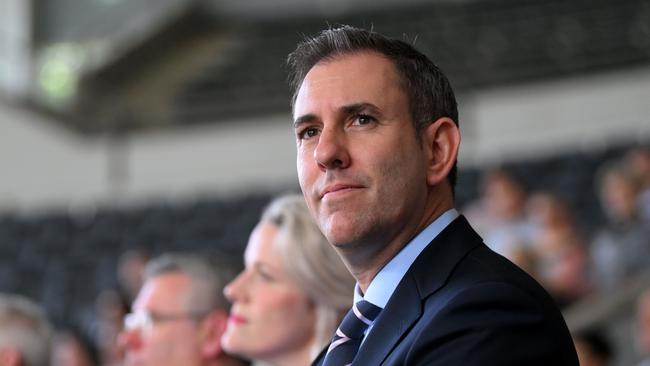RBA review failed dismally and spectacularly
Treasurer Jim Chalmers’ immediate and unqualified acceptance of all 51 recommendations contained in the RBA Review confirms again his unreadiness to shed his trainer wheels just yet.

Terry McCrann
Don't miss out on the headlines from Terry McCrann. Followed categories will be added to My News.
Which is more embarrassing – and indeed disturbing?
The shoddy – undergraduate level – analysis contained in the Review of the Reserve Bank, with its hubristic claim of making it “Fit for the future”?
Or the immediate and unqualified acceptance of all 51 recommendations by the treasurer, confirming again his unreadiness to shed his trainer wheels just yet? The Review fails the most basic of requirements: any evidence for what are ultimately just assertions, that add up to one all-encompassing assertion: there is a better way (to do the RBA’s job); and, incidentally, it is our way. Nowhere in the near-300 pages is there even an attempt to analyse the performance of the RBA against other central banks; far less, obviously, evidence that it has performed poorly against such a ‘peer group’.
Self-evidently, it doesn’t then go on to make the case that the RBA’s – to repeat: non-existent – underperformance is a consequence of its structure, governance and operational technique. Indeed, there’s a grudging – inadequate and functionally misleading – concession that Australia’s (the RBA’s) performance has been “at least on par with other comparable economies”.

Sorry, the performance, specifically, of the RBA – and specifically compared with the Fed, the BoJ, the BoE, the ECB and the Bank of Canada, at which one of the Review members spent six years as deputy governor, has been better and undeniably better.
I would further argue that the better outcome is precisely a consequence of the RBA’s unique policy governance structure and operational technique. And, bluntly, exactly its culture.
On the evidence, as opposed to assertion, the central banks that have ‘design flaws’ add up to a very long list; and it’s a list that does not include the RBA.
The Review ‘focused on’ three recent periods, to sustain its criticisms and its proposed ‘reforms’. The 2016-2019 so-called ‘inflation undershoot’. The Covid response. And the recent inflation surge.
Two rather basic things are missing from the Review’s assessment. The first was any seeming awareness that none of these events were unique to Australia and to our RBA.
Every central bank, and certainly the main ones, undershot their inflation targets through the 2010s, despite other ones taking much more aggressive – and costly, ineffective and long-term damaging zero rates and money-printing - actions than the RBA.
Everyone panicked back in March 2020. The ‘leading’’ central banks – the Fed, the ECB, the BoE and the BoJ – panicked from an already panicked and thoroughly debased starting point, compared to the RBA.
A more intelligent assessment – clearly beyond the capacity of the Review Panel – would have had to conclude that our RBA handled the first, the 2016-19 period, better than just about any other central bank and the second, the Covid panic, at least as well (or badly). As for the third – the ‘promise’ and the slow response to the rising inflation - very few did better, the RBNZ and a couple of minor European central banks; and most and especially all the ‘big guys’ did disastrously and embarrassingly worse.
Led by the Fed with its literally hundreds of ‘experts’.
As I’ve written before: spare me – and the nation – from the ‘expertism’ of fake experts.



